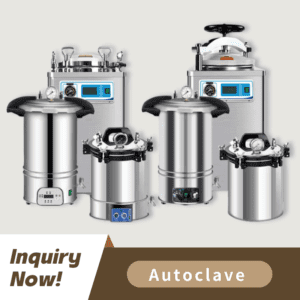
Autoclaves function as sterilization devices that use combined high-pressure steam and heat to eliminate bacteria, viruses and harmful microorganisms. Sterilization protocols require autoclaves as their central element in places where sterile conditions must be strictly maintained. With proper autoclave usage users achieve complete sterilization of their instruments to ensure safety for future use.
A clear understanding of autoclave components is essential for efficient operation. The key elements include:
The chamber serves as the enclosed area where items undergo sterilization.
Heating Element: Provides the necessary high temperatures.
The control panel enables operators to configure cycle parameters and monitor the sterilization process.
The pressure gauge monitors the internal pressure to confirm proper autoclave operation.
Safety valves protect against over-pressurization by releasing excess pressure.
Following autoclave procedures precisely remains essential for proper operation. Failure to operate an autoclave correctly can result in ineffective sterilization which damages costly medical tools and risks patient safety. This guide includes extensive information about autoclave use with detailed instructions for operating an autoclave and safe autoclave practices.
Always consult the provided checklist before starting an autoclave cycle.
Check the chamber for cleanliness and absence of any contaminating materials.
Check the functionality of all safety systems before operation.
Checking gaskets and seals before use will help to stop steam from escaping during autoclave operation.
Load items evenly within the autoclave to prevent steam distribution blockages.
Following this checklist creates a safe baseline and sets up effective learning for operating autoclave equipment.
Autoclave system operation requires proper loading as a basic understanding element.
Organize instruments in a configuration that promotes effective air and steam circulation throughout the autoclave.
Utilize perforated trays whenever possible to promote uniform steam distribution.
Do not fill the chamber to capacity because overloading creates inefficient autoclave cycles and can cause incomplete sterilization.
Operating autoclave equipment requires proper adjustments of the control panel’s cycle parameters.
Set your instruments’ temperature to either 121°C or 134°C based on what works best for your equipment.
Ensure the pressure gauge displays the correct operating pressure during the operation.
Adjust the duration of the sterilization cycle according to the specific requirements of the items undergoing sterilization.
Check the autoclave instructions to learn about the best settings that apply to your particular application.
Once you’ve loaded the autoclave and adjusted the correct parameters you need to begin the cycle.
Initiate the autoclave cycle by pressing the “Start” button on the control panel.
Keep an eye on the digital display which provides readings for temperature, pressure, and the remaining cycle time.
Watch for any alerts and instructions that display on the screen since they guide safe autoclave operation. Safety in autoclave use requires understanding these critical instructions.
After completing the cycle perform these post-cycle operations.
Make sure items are properly cooled down before removing them. Proper cooling helps avoid burns and protects against thermal shock.
Gradually open the door while maintaining caution to prevent steam burns.
After sterilization examine the tools to identify any moisture or condensation present.
Execute chamber cleaning if residue shows up or if the sterilization cycle faced interruptions.
This part of the process highlights the critical need to perform every step of the autoclave procedure to guarantee both safety and proper sterilization.
This section provides step-by-step instructions for operating an autoclave correctly.
To become proficient in operating an autoclave it is important to understand proper preparation techniques.
Clean instruments by removing organic debris such as blood or tissue before autoclave sterilization.
Select packaging materials such as autoclave pouches or wraps which meet the recommended standards.
Establish sterilization success by applying chemical or physical indicators.
With your items prepared you should now adjust your autoclave for optimal performance.
Ensure the water tank is filled to capacity with distilled or demineralized water to prevent mineral deposits.
The autoclave should be current with its maintenance schedule because this is necessary for getting dependable instructions on its operation.
Once all setup procedures are completed initiate the sterilization cycle.
During the cycle operation use the control panel to track progress and confirm that all parameters stay within acceptable limits.
Document the temperature, time, and pressure parameters of each cycle in a logbook to meet quality assurance requirements and regulatory standards.
Examine the troubleshooting guide as soon as you encounter error codes or unexpected alerts.
Learning autoclave procedures requires mastering troubleshooting as an essential skill.
To prevent incomplete sterilization inspect your loading technique and make sure the chamber contents do not exceed capacity.
Monitor the water reservoir condition whenever you notice inconsistent autoclave cycle performance because water quality plays a pivotal role.
Ensure proper functioning of the pressure gauge and safety valves through consistent inspections.
The proper use of autoclave equipment requires strict adherence to safety protocols. Implementing safety precautions helps to mitigate the dangers posed by high-pressure steam and elevated temperatures. Always consider the following safety tips:
Wait until the autoclave has reached ambient temperature before opening the chamber.
Use heat-resistant gloves and eye protection along with additional recommended personal protective equipment (PPE).
Always refrain from trying to open the chamber door when it remains pressurized.
Routine maintenance is critical for autoclave safety:
Perform routine checks on both gaskets and seals along with safety valves.
Regular updates of the control panel’s software help prevent system errors.
Arrange regular professional maintenance checks to maintain proper operation of all system components.
Achieving high standards in autoclave operations requires thorough training for all staff members.
Develop thorough training sessions which include autoclave usage and safety guidelines.
Simulation exercises provide staff practical training for operating autoclave systems.
Hand out current procedural manuals along with quick reference cards for regular use.
Despite adherence to all protocols emergencies remain a possibility.
Master the proper steps to perform a safe autoclave shutdown during emergency situations.
Familiarize yourself with the placement of emergency buttons and valves operating within the machinery.
Create and rehearse a detailed plan for responding to emergencies.
Experienced operators can perform at their best by mastering advanced techniques.
Understand how cycle parameters should be modified when processing various material types.
Utilize specialized sterilization cycles which have been specifically designed to handle sensitive medical instruments.
Use advanced digital monitoring systems to track sterilization metrics as they occur in real-time.
The specific autoclave procedure depends on the type of instruments that need sterilization.
Proper steam penetration for surgical instruments often requires them to be autoclaved using less dense loading configurations.
Laboratory Glassware can endure elevated temperatures without sustaining damage.
Protect electronic components from damage by utilizing dedicated sterilization cycles.
Despite rigorous procedures, issues may still occur:
A malfunctioning heating element or temperature sensors should be examined if the autoclave fails to achieve the desired temperature level.
Monitor the pressure gauge for accurate readings and inspect safety valves to ensure there are no obstructions.
Refer to the autoclave instructions to follow the troubleshooting steps whenever error codes appear during operation.
Accurate documentation forms an essential element of each autoclave procedure.
Maintain a dedicated logbook where all cycle parameters such as temperature, time and pressure must be recorded during each cycle.
Record any cycle anomalies or interruptions without delay.
Detailed logs are required during audits and regulatory inspections to verify the sterilization process.
Mastering autoclave operation in a high-demand medical setting requires understanding specific operational techniques.
In fast-moving medical environments efficiency becomes essential. To streamline processes, consider the following:
Design uniform standard operating procedures (SOPs) which include loading, cycle initiation and post-cycle checks.
Equip all autoclave operators with checklists that detail safe and effective usage procedures.
Organize regular training sessions and reviews to keep all staff members informed about the latest autoclave procedures.
Effective autoclave operations rely on cooperation:
Work alongside your infection control team to examine sterilization protocols and ensure they follow health guidelines.
Maintenance personnel require open channels of communication to resolve technical problems quickly.
Create designated communication pathways so operators can easily submit their concerns and suggestions for improvement.
You can maintain superior sterilization processes through ongoing improvement efforts.
Perform routine audits of autoclave procedures to discover potential improvements.
Operational personnel should provide their observations for improving cycle parameters and procedures.
Keep up to date with advancements in autoclave technology and current safety recommendations.
The ability to operate autoclaves properly is essential to maintaining safety standards and efficient performance in healthcare sterilization procedures. Proper sterilization and safety assurance of medical instruments requires following detailed autoclave operation instructions which include pre-operation checks and item loading, cycle parameter settings and post-cycle safety processes.
Efficient and safe operations result from following the entire autoclave procedure and maintaining equipment while training staff members. Both novice users and experienced operators need to understand autoclave instructions and safety guidelines because they are central to successful machine operation. A documented process helps ensure quality assurance while making it easier to meet industry standards and regulatory requirements.
The guide contains every required step including basic instructions and detailed procedures for operating and troubleshooting autoclaves as well as advanced techniques and fundamental safety protocols. This knowledge enables you to establish and sustain efficient autoclave operations across various demanding medical and laboratory settings.
A1: Begin by reading the user manual thoroughly. Perform all pre-operation checks, familiarize yourself with the control panel, and start with a simple test cycle. This gradual approach helps you understand how to operate autoclave equipment while ensuring safety.
A2: Most cycles are set to either 121°C or 134°C based on the item specifications, with pressure settings based on the manufacturer’s guidelines. Always refer to the autoclave instructions provided by your device manufacturer.
A3: Always follow safety protocols by wearing appropriate personal protective equipment, allowing time for cooling, and never forcing the chamber door open if residual pressure remains. Regular inspections and maintenance also contribute to autoclave safety.
A4: In the event of an interruption, do not open the chamber immediately. Wait for the pressure to normalize and follow the manufacturer’s troubleshooting steps before restarting the cycle. Document any anomalies for quality assurance.
A5: Different materials require tailored cycle parameters. Delicate instruments might require a lower temperature or shorter cycle, while robust items can withstand longer exposure. Always follow specific guidelines for each type of medical device.
A6: Regular maintenance includes cleaning the chamber, inspecting gaskets and seals, checking safety valves, and ensuring that the water quality meets the requirements. Routine staff training and immediate troubleshooting of issues are also essential.
If you have any questions about autoclave operations and functionality or need further guidance on how to operate autoclave equipment safely in your facility, please get in touch with us at Keling Medical:
- E-Mail: inquiry@shkeling.com - WhatsApp: +8618221822482 - Website: https://autoclaveequipment.com/
We look forward to assisting you with all your autoclave needs and helping you maintain a safe and efficient sterilization process.

Die Sterilisation ist ein wesentliches Element der Infektionskontrolle sowohl in Gesundheitseinrichtungen als auch in Laborumgebungen. Die Sterilisation im Autoklaven durch Dampf erweist sich bei vielen Anwendungen als effektiv, aber suboptimal bei
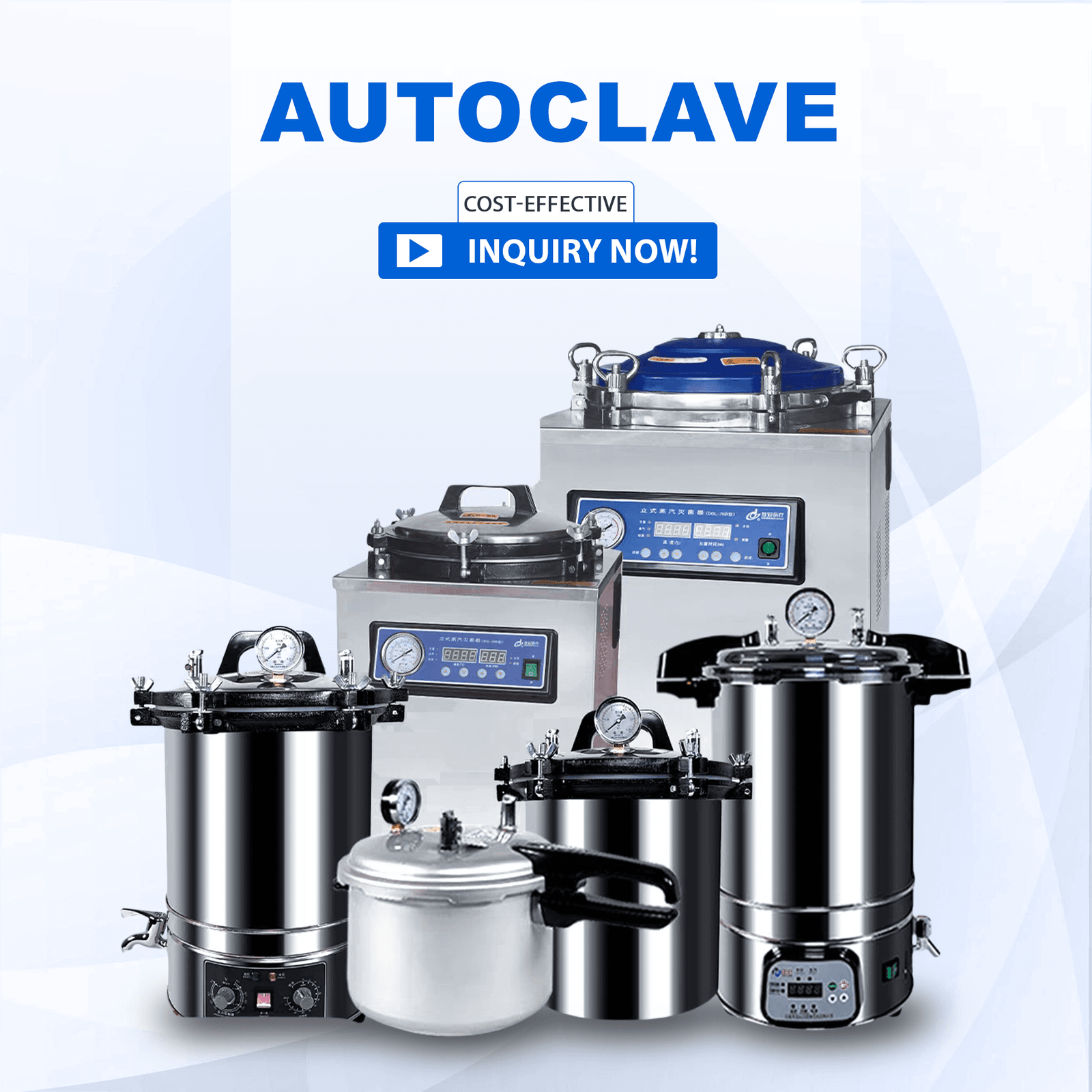
Medizinisches Fachpersonal auf der ganzen Welt vertraut auf Autoklaven als unverzichtbare Instrumente zur Gewährleistung der Sicherheit und Sterilität von medizinischen Instrumenten. Händler von Medizinprodukten und Beschaffungsspezialisten müssen die Prinzipien und Vorteile von Autoklaven verstehen

Die Fortschritte im Gesundheitswesen machen es unabdingbar, dass medizinische Instrumente jederzeit sicher und steril bleiben. Vertriebsunternehmen, Händler und Beschaffungsexperten für medizinische Geräte müssen die Sterilisationsmethoden kennen, um effektiv arbeiten zu können. Die Website
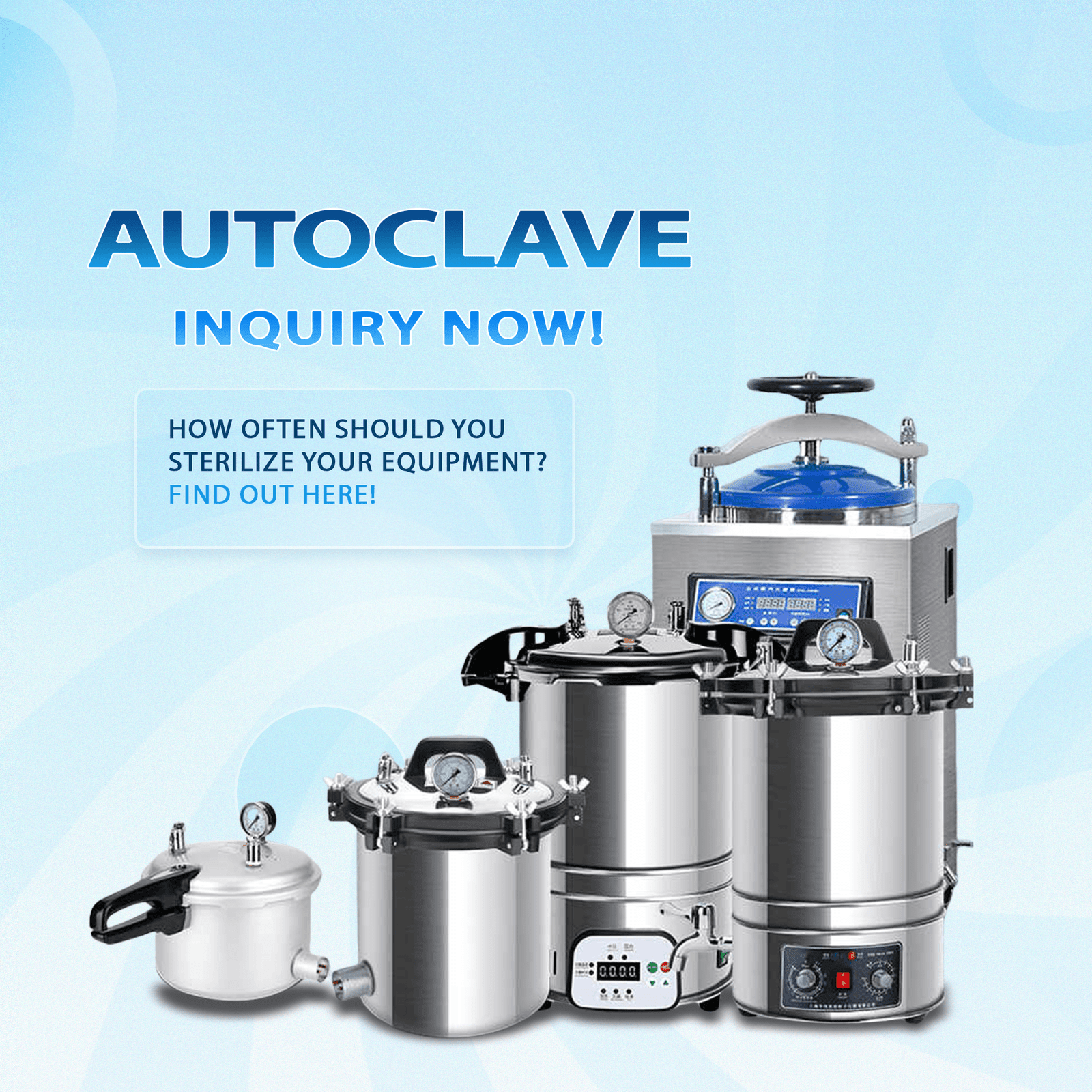
Für die Sterilisation von medizinischen Geräten und Instrumenten sind Autoklaven erforderlich, da sie die Sicherheit der Patienten schützen und die Einhaltung der gesetzlichen Vorschriften erleichtern. Auch die ausgefeiltesten Autoklavensysteme unterliegen gewissen Einschränkungen. Vertreiber von Medizinprodukten,
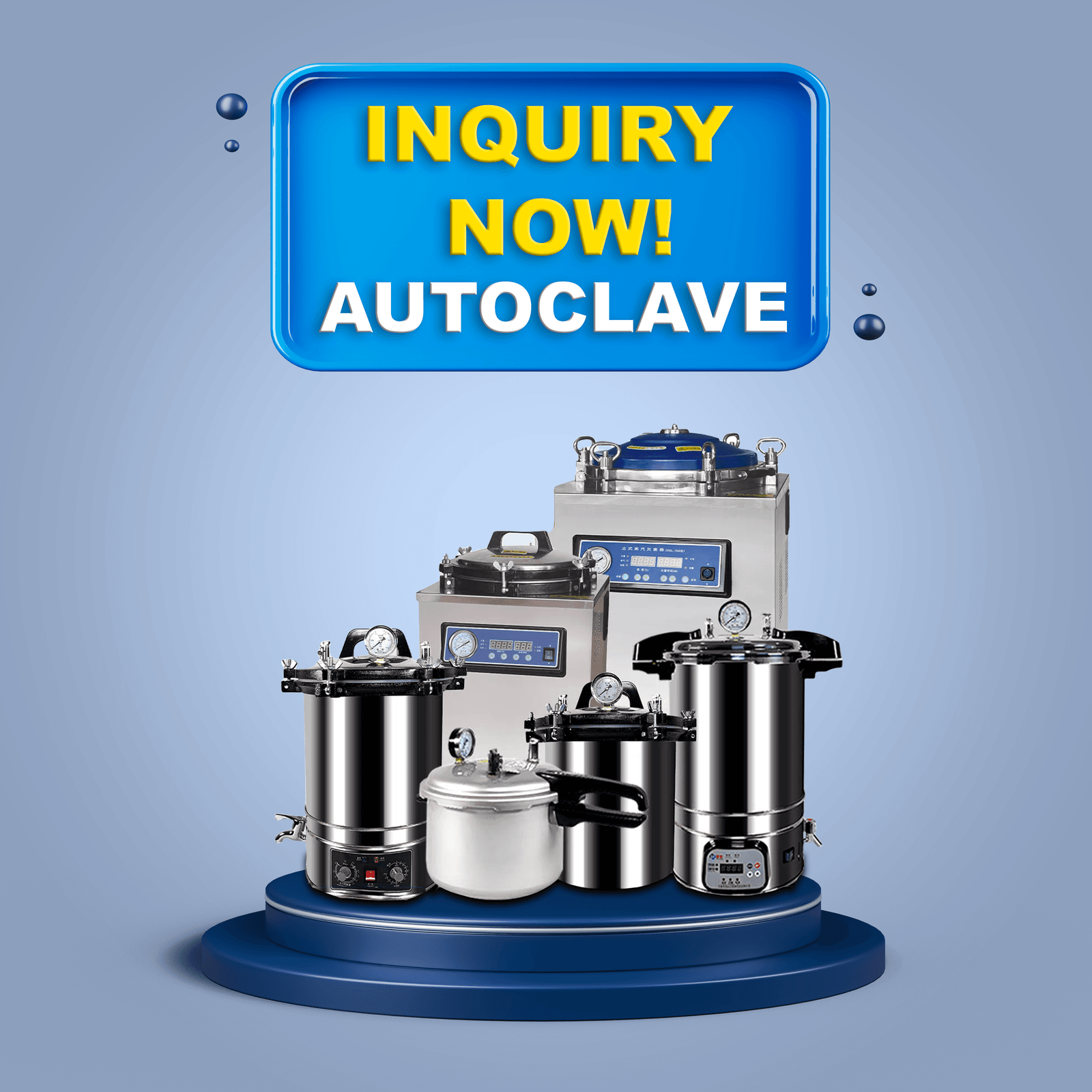
In der Herstellung von Medizinprodukten sind Autoklaven unverzichtbar, da sie eine gleichmäßige Sterilisation verschiedener Instrumente und Materialien gewährleisten. Autoklaven nutzen gesättigten Hochdruckdampf zur Ausrottung von Bakterien, Viren, Pilzen und
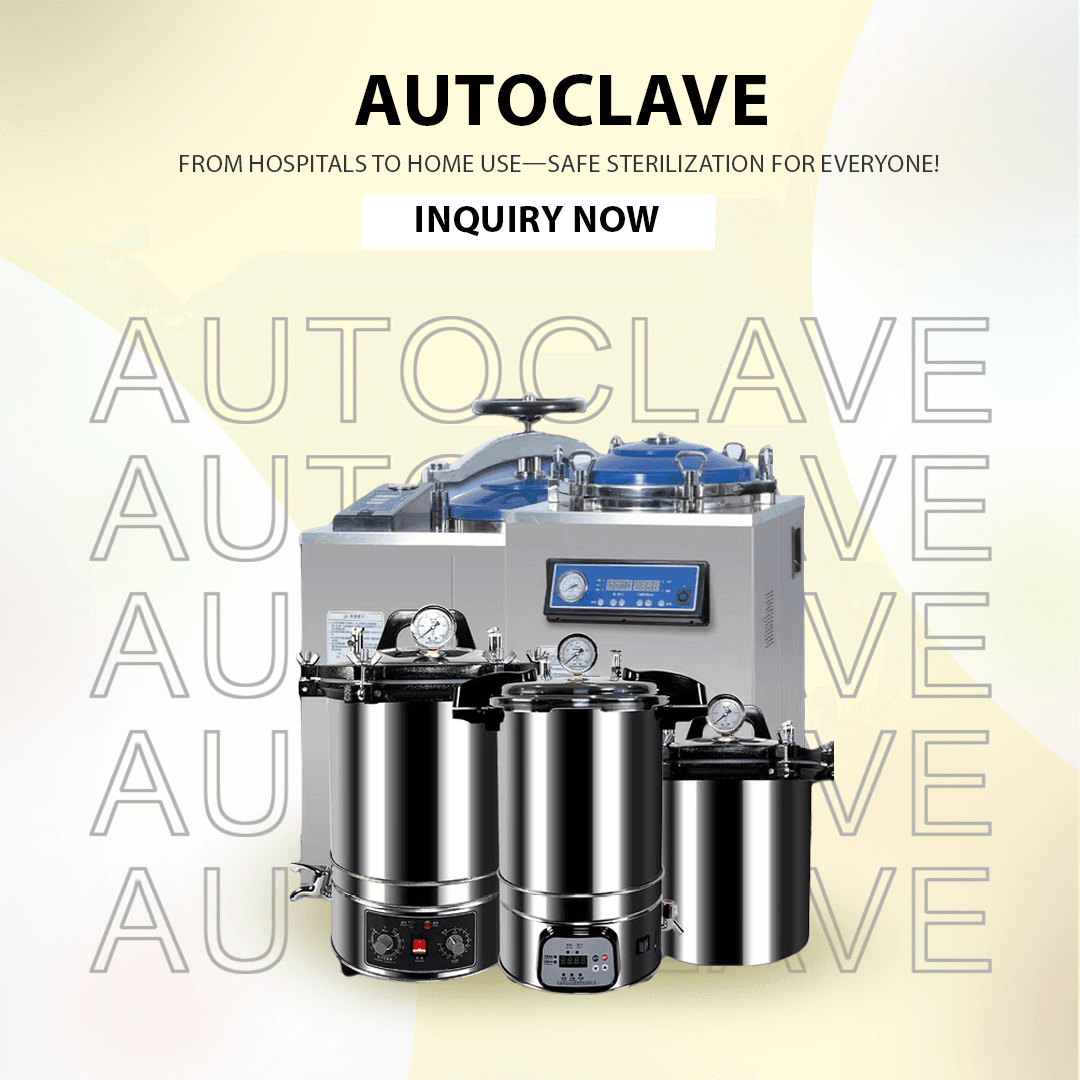
Autoklaven sind wichtige Geräte im Gesundheitswesen und in der Wissenschaft, da sie Instrumente und Materialien konsequent sterilisieren. Vertreiber von medizinischen Geräten sowie Händler und Beschaffungsexperten müssen dafür sorgen, dass Autoklaven funktionieren